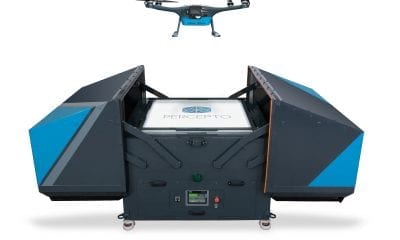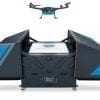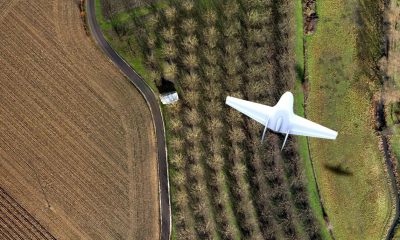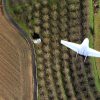
News
An Autonomous Cargo Drone from Sabrewing
What if a cargo carrying drone could also be autonomous to the extent of detecting and avoiding obstacles on its own? So far, no drone has met the bar but Sabrewing Aircraft Company, a startup in Camarillo, California, may well be the first to do it. Philip E. Ross of IEEE Spectrum has reported on how the company is working on a cargo-carrying drone that’s due to begin test flights in 2020.

The drone named Rhaegal after a dragon from the “Game of Thrones” series, will combine data from a camera, a lidar capable of looking 350 meters ahead, a radar, a forward-looking infrared detector (for landing at night), and a send-and-receive GPS navigation system, known as ads-b.
Ed De Reyes, the chief executive of Sabrewing says “Ours is the first that fuses sensors; the FAA (U.S. Federal Aviation Administration) hasn’t seen a solution like ours,” adding, “Even the military does it only in a kind of rudimentary way, say with a camera system; our system has to provide a way for the aircraft to autonomously avoid obstacles.” One of the drone’s first applications will likely be for the U.S. military, which wants pilotless systems to ferry supplies to outposts and to evacuate wounded soldiers under circumstances too dangerous to justify.
In compliance with the FAA rule which requires any drone over 22 kilograms (50 pounds) to have a remote pilot, the Rhaegal will initially require a remote pilot and the detect-and-avoid system will merely help that pilot out since a Rhaegal will weigh up to 1,360 kg (3,000 pounds) when fully loaded.
In the test flights, planned to take place in the Aleutians, a string of islands in Alaska, the drone will hoist 360 kg (800 pounds) when lifting off vertically and a quarter more than that when taking off from a 90-meter runway.
The Rhaegal will comprise four ducted fans, powered by motors driven by electricity generated by a Rolls Royce turbine. The wingspan will be 9 meters (30 feet), the length slightly less, the speed up to 180 knots, and the cruising altitude as high as 6.7 kilometers (22,000 feet). Currently, the company is running its wind-tunnel tests on a model scaled to just one-eighth the intended final size.
There are several other startups developing cargo-lugging drones.
Natilus, plans to build a giant seaplane capable of hauling 100 metric tons.
Dronamics, is aiming at a sea plane smaller in size.
And a Chinese consortium has already test-flown a modified civilian airplane as a drone.
But all these aircraft require runways and certification by regulators which can be slow and expensive-sometimes as costly as building the aircraft itself. A vertical-takeoff drone would have certain advantages in certification here.
Startup, Elroy, is also doing vertical liftoff and landing. “But they are only looking for the last mile, and carrying 150 pounds (68 kg), and we’re 10 times that amount,” De Reyes says, adding, “We’ll do quite a bit of testing in the protected area of Alaska, then in all of Alaska, and then [the FAA] will let us operate in a few routes in the lower USA,” says De Reyes.
Vertical takeoff and landing will be of advantage not just in the battlefield but also for civilians who live where runways are scarce.

























